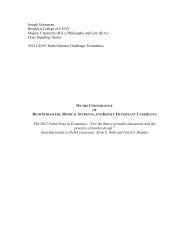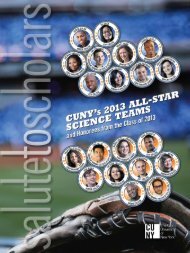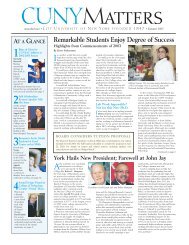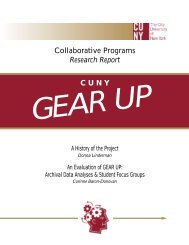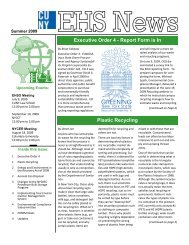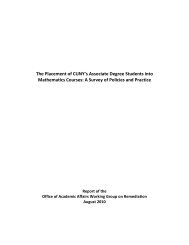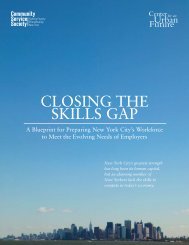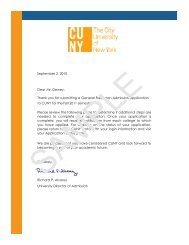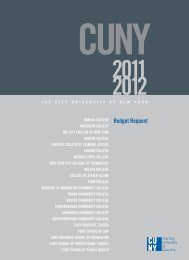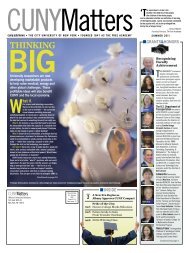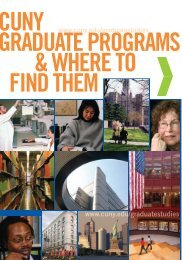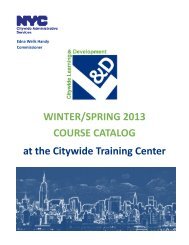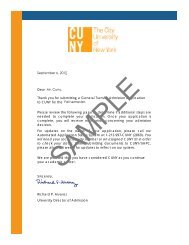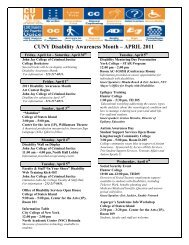CUNY Master Plan 2012-2016
CUNY Master Plan 2012-2016
CUNY Master Plan 2012-2016
Create successful ePaper yourself
Turn your PDF publications into a flip-book with our unique Google optimized e-Paper software.
MISSION PART TWO<br />
ASAP<br />
Three-Year Associate Degree Graduation Rates<br />
Accelerated Study in Associate Programs (ASAP)<br />
55%<br />
Matched Sample of <strong>CUNY</strong><br />
Community College Students<br />
24%<br />
National Average, Urban<br />
Community Colleges<br />
16%<br />
0% 10% 20% 30% 40% 50% 60%<br />
ASAP program elements include required full-time study, a cohort model with block scheduled<br />
courses, a limited number of majors, consolidated class schedules, small class size, comprehensive<br />
advisement, academic and career development services, and special programs to support student success.<br />
Students with developmental needs take these courses immediately and continuously and attend<br />
tutoring. The program aggressively promotes winter and summer course taking to increase credit accumulation<br />
momentum. Financial resources provided to remove the barriers to full-time study include<br />
waiver of any balance between financial aid and tuition/fees, free use of textbooks, and monthly Metrocards.<br />
Students also report that close, personal relationships with program staff and structured support<br />
are instrumental in helping them complete their degrees.<br />
ASAP is now at six community colleges and current enrollment is 1,338. Student demographics mirror<br />
those at other <strong>CUNY</strong> community colleges. The students are largely minority and low income. Most work,<br />
and many have children and are the first in their families to attend college. Many are also overcoming<br />
challenging personal circumstances, but ASAP students are nevertheless succeeding in previously<br />
unimaginable ways.<br />
The program employs a rigorous evaluation agenda that includes quantitative and qualitative data<br />
analysis. Data, including student outcomes, are constantly examined to assess program efficacy and to<br />
make adjustments if appropriate. ASAP is currently involved in a random assignment experiment led by<br />
MDRC, one of the most respected independent organizations conducting research in higher education.<br />
Students with one or two developmental needs have been randomly assigned to either ASAP or traditional<br />
community college education at <strong>CUNY</strong>. The first results of this experiment are being released by<br />
MDRC in spring <strong>2012</strong>. A complete financial analysis of ASAP, including determination of the cost per<br />
graduate as compared to the cost per student, is also being conducted in spring <strong>2012</strong>.<br />
Initial funding from the CEO has now been baselined into the regular operating budget of the University.<br />
ASAP has become a model both within and outside of <strong>CUNY</strong>. The program is regularly cited in major<br />
publications on community colleges, at national higher education forums, and by respected funding and<br />
policymakers as a successful evidence-based program.<br />
53



